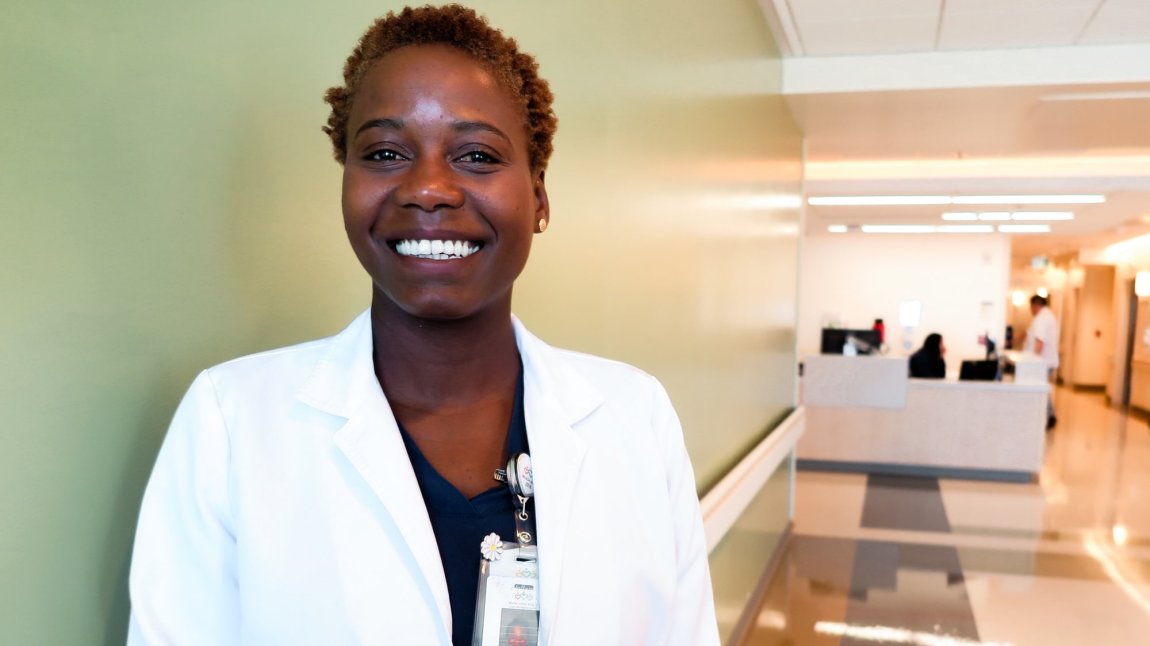What are those red apples on the doors of patient rooms at Martin Luther King, Jr. Community Hospital (MLKCH)? The answer has to do with saving lives and pioneering new and better ways to take care of some of the most complex cases in healthcare. It also has to do with a young and passionately committed nurse named Diane Fortin.
Diane, 36, works the night shift on the third floor of MLKCH. Her job is to care for patients in the “MedSurg/Telemetry” Department—acutely ill patients recovering from surgery or suffering from heart disease or complications from diabetes.
Most of these patients are from South Los Angeles, one of the most medically underserved communities in the nation. These kinds of patients are Diane’s calling. Like them, she grew up in a disadvantaged community in Naples, FL. Not the Naples of million-dollar beach homes and wealthy retirees, but the other Naples, where the low-income housecleaners and servers and gardeners lived, with “the same lack of education and lack of trust as in South LA, and the same lack of access to high-quality care,” Diane recalled. “I could relate.”
